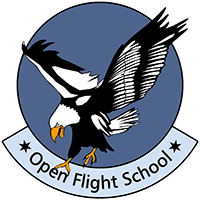Main Glossar
A | B | C | D | E | F | G | H | I | J | K | L | M | N | O | P | Q | R | S | T | U | V | W | X | Y | Z | ALL
Currently sorted First name descending Sort by: Surname | First name
LAI | |||
|---|---|---|---|
Lookout, Attitude, Instruments A method of maintaining a good Lookout whilst ensuring the aircraft maintain the desired altitude, heading and speed. LOOKOUT - This is completed in two stages, beginning with the Right hemisphere. Look as deep into your 5 o’clock as you can and scan fully up and down whilst progressing you Lookout back to the ahead. ATTITUDE - Whilst looking ahead assess you aircraft‘s attitude to the horizon. Ensure it remain where you desired. INSTRUMENTS - Check that this attitude is maintain your chosen flight path by checking the instruments:
See also: SHT for a method of correcting errors | |||
Max Drift | |||
|---|---|---|---|
Max Drift A method of assessing the effect of wind on the aircraft drift from track. MAX DRIFT - The maximum drift an aircraft will suffer from a wind directly abeam the flight path. This is estimated by taking the windspeed and dividing it by the aircraft’s speed in nm / minute. E.g. An aircraft flying at 240 kts is covering 4 nm / minute. With a wind from directly abeam with a speed of 20 kts the aircraft will suffer a drift of 5˚. 20 / 4 = 5 See also: Clock Code | |||
NAVEX | |||
|---|---|---|---|
Navigation Exercise A flight primarily aimed at exercising navigation skills | |||
OAT | |||
|---|---|---|---|
Outside Air Temperature The temperature of the air around the aircraft. Low temperature causes the air to be more dense and so appear as if the aircraft is flying lower when assessed on a Barometric Altimeter. Average Air Temperature at sea level for the ICAO Standard Atmosphere is 15° Wiki: Outside Air Temperature | |||
PAAT | |||
|---|---|---|---|
Progressively Adjust the Attitude and Trim PROGRESSIVELY ADJUST the ATTITUDE - As an aircraft accelerates from a Climbing speed to a Straight and Level speed the lift initially generated by the initial attitude of attack increases as the speed increase. If attention is not paid to this the aircraft will begin to climb. The attitude will need to be progressively reduced as the speed increases. and TRIM - At each stage of attitude change the trim will need to be adjusted to ensure the aircraft maintain the new attitude with minimal input from you. | |||
PAT | |||
|---|---|---|---|
Power, Attitude, Trim A method of changing airspeed whilst maintaining level flight, or levelling off from a descent. POWER - Adjust the throttle to give the expected required power for the new Straight and Level speed. ATTITUDE - Adjust the aircraft in pitch to the expected attitude for that speed. TRIM - Trim any stick forces to a minimum so that the aircraft maintains the new attitude with minimal attention from you. | |||
Ramp | |||
|---|---|---|---|
Ramp Fuel The minimum fuel required to be in the airbase overhead prior to landing, or on deck if landing on a vessel. | |||
RCDI | |||
|---|---|---|---|
SHT | |||
|---|---|---|---|
Select, Hold, Trim A method of correcting small errors in attitude. SELECT - Adjust the aircraft attitude slightly to minimise the error that is developing HOLD - Hold this new attitude against any stick forces. TRIM - Adjust the relevant trim to minimise the stick forces so that the aircraft will stay on the new attitude with little attention from you. | |||
SUTTO | |||
|---|---|---|---|
Start Up, Taxi, Take-off Primarily referred to the fuel required to start up, taxi and take-off from the airfield to a point at which the climb is established. It can also refer to the time taken to get from start to established in the climb. | |||
TACAN | ||||
|---|---|---|---|---|
Tactical Air Navigation, military radio beacon, similar to the VOR/DME used for civilian purposes. A ground (or air) based navigation beacon allowing display of bearing and slant range to the beacon. It has greater accuracy than VOR / DME. Codes: 127 Bands: 2 (X and Y) A limited version of TACAN can be implemented in fighters allowing reception of range Information only. See also: “YARDSTICK” Further information: | ||||
VOR | |||
|---|---|---|---|
VSI | |||
|---|---|---|---|
